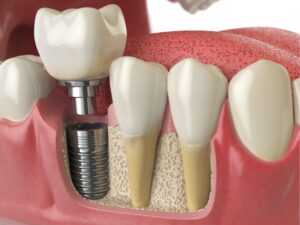Dental insurance is one of the most important investments in your health that often goes overlooked. Unlike general health insurance, dental plans focus specifically on preventive care, cleanings, and treatments related to your oral well-being. Proper dental care not only keeps your smile bright but also plays a vital role in your overall health. From addressing cavities to early detection of more serious conditions, dental insurance helps cover procedures that might otherwise become a financial burden. Understanding how to enroll in a dental plan is essential to ensuring you’re covered when you need it most. This guide aims to make the process as simple and straightforward as possible.
Understanding Different Types of Dental Insurance Plans
Before enrolling in dental insurance, it’s crucial to familiarize yourself with the types of plans that are available. The most common options are Preferred Provider Organizations (PPOs), Health Maintenance Organizations (HMOs), and Discount Dental Plans. PPOs provide the flexibility to choose your dentist, often covering a portion of out-of-network care, while HMOs typically require you to visit dentists within their network to access benefits. Discount plans, on the other hand, offer reduced rates for dental services but do not operate as traditional insurance. Each type comes with its own benefits and limitations, so understanding the differences will help you select the best option to meet your needs.
Evaluating Your Dental Needs
Dental insurance isn’t a one-size-fits-all solution, so it’s important to assess your specific needs before choosing a plan. Some individuals may only require routine cleanings and preventive care, while others might need coverage for orthodontics, crowns, or other complex procedures. If you already know your dental history, consider any recurring issues, planned treatments, or family needs that could impact your choice. For families, look for plans that cover pediatric dental services or orthodontic care for children. By evaluating your unique situation, you’ll make a more informed decision and avoid paying for features you don’t need.
Comparing Dental Insurance Providers and Plans
After determining your needs, it’s time to compare different providers and the plans they offer. Start by researching trusted insurance companies, reading reviews, and gathering recommendations. Key factors to consider include monthly premiums, deductibles, maximum coverage limits, and co-pays. Be sure to check if the insurance plan includes your preferred dentist or offers a broad network of practitioners. Additionally, some plans may include waiting periods before certain procedures are covered, so make sure to factor this into your decision, especially if you require immediate dental care. Comparison shopping will ensure you secure the best plan for both your oral health and your budget.
Navigating the Enrollment Process
Enrolling in dental insurance can seem like a daunting task, but understanding each step will make the process more manageable. Most providers allow you to enroll through their websites, where you’ll be guided through plan options and coverage details. Carefully read the terms and conditions before finalizing your enrollment, and be prepared to provide basic personal and financial information during the sign-up process. If you’re enrolling through an employer-sponsored plan, check with your HR department for enrollment deadlines or open enrollment periods. Keep copies of all documents and confirmations to ensure everything is in order as you begin your coverage.
Maximizing Your Dental Insurance Benefits
Once enrolled, it’s time to make the most of your dental insurance. Start by scheduling regular cleanings and exams, as most plans fully cover preventive care. Familiarize yourself with what’s included under your coverage and use your benefits wisely. If your plan offers discounts on services like teeth whitening or orthodontics, take advantage of them while you can. Keep track of your covered benefits, annual limits, and renewal periods to avoid surprise costs. Being proactive with your dental care ensures that you utilize your insurance efficiently and maintain good oral health.
FAQs on Dental Insurance Enrollment
1. What does dental insurance typically cover?
Most plans cover preventive care such as cleanings, exams, and X-rays. Some plans also include coverage for fillings, root canals, and orthodontic treatments, depending on the tier you choose.
2. Can I enroll in dental insurance at any time?
If you’re purchasing an individual plan, you can typically enroll at any time. However, employer-sponsored plans may require you to enroll during open enrollment periods.
3. Do I need dental insurance if I don’t have dental issues?
Yes! Routine cleanings and exams can prevent potential dental issues, saving you money in the long run and keeping your overall health in check.
4. How do I find out if my dentist is in-network?
Most insurance providers offer an online search tool or customer service helpline where you can verify if your dentist is part of their network.
5. What happens if I change my dental insurance provider?
When switching providers, check for any overlapping waiting periods or limitations on immediate care. Be sure to compare benefits to ensure a smooth transition.




